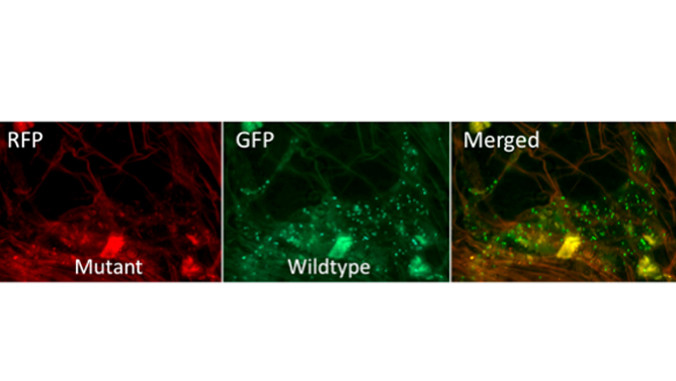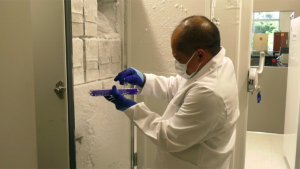
Research into a newly discovered bacterial interaction that affects people with weakened immune systems, particularly cystic fibrosis (CF) patients, earned a $400,125 grant from the National Institutes of Health. The University of Hawaiʻi at Mānoa School of Life Sciences research team, led by Professor Tung Hoang, hopes their findings will help CF patients avoid hospitalizations and increase their life expectancy.

The interaction is between a bacterial attachment protein in the Burkholderia cepacia complex (Bcc) and its host cell receptor protein. Bcc is a group of bacteria that can cause serious infections in people with CF. Bacterial attachment is the critical first step for establishing infections, making the process an ideal target to prevent disease or hinder progression.
In the U.S., there are about 40,000 children and adults living with CF, spanning every racial and ethnic group. People with CF have thick mucus built up in their lungs, which provides a favorable environment for bacteria to establish chronic infections.
“Bcc infection has been associated with a more rapid decline in CF lung function, increased hospitalizations and significantly decreased life expectancy,” Hoang said. “The treatment of Bcc infection is particularly challenging due to intrinsic antibacterial drug resistance.”

The grant will enable the researchers to further explore the significance of Bcc and its host interaction, using in vitro tissue cultures and in vivo models, in whole living organisms such as mice and fruit flies. According to Hoang, this research may have implications for other diseases.
“This discovery is quite unique and interesting because its host receptor protein is closely linked to multiple malignant cancers and neurodegenerative diseases like Alzheimer’s disease and Parkinson’s disease,” Hoang said.
Zhenxin Sun, a UH Mānoa postdoctoral researcher in Hoang’s lab, will lead the research to further characterize this interaction at the molecular level.
“We believe this research has the potential to contribute to our understanding of not only bacterial infections, but also to the development of novel treatments of infectious diseases, by interfering with bacterial surface protein and host receptor protein interaction,” Hoang said.

